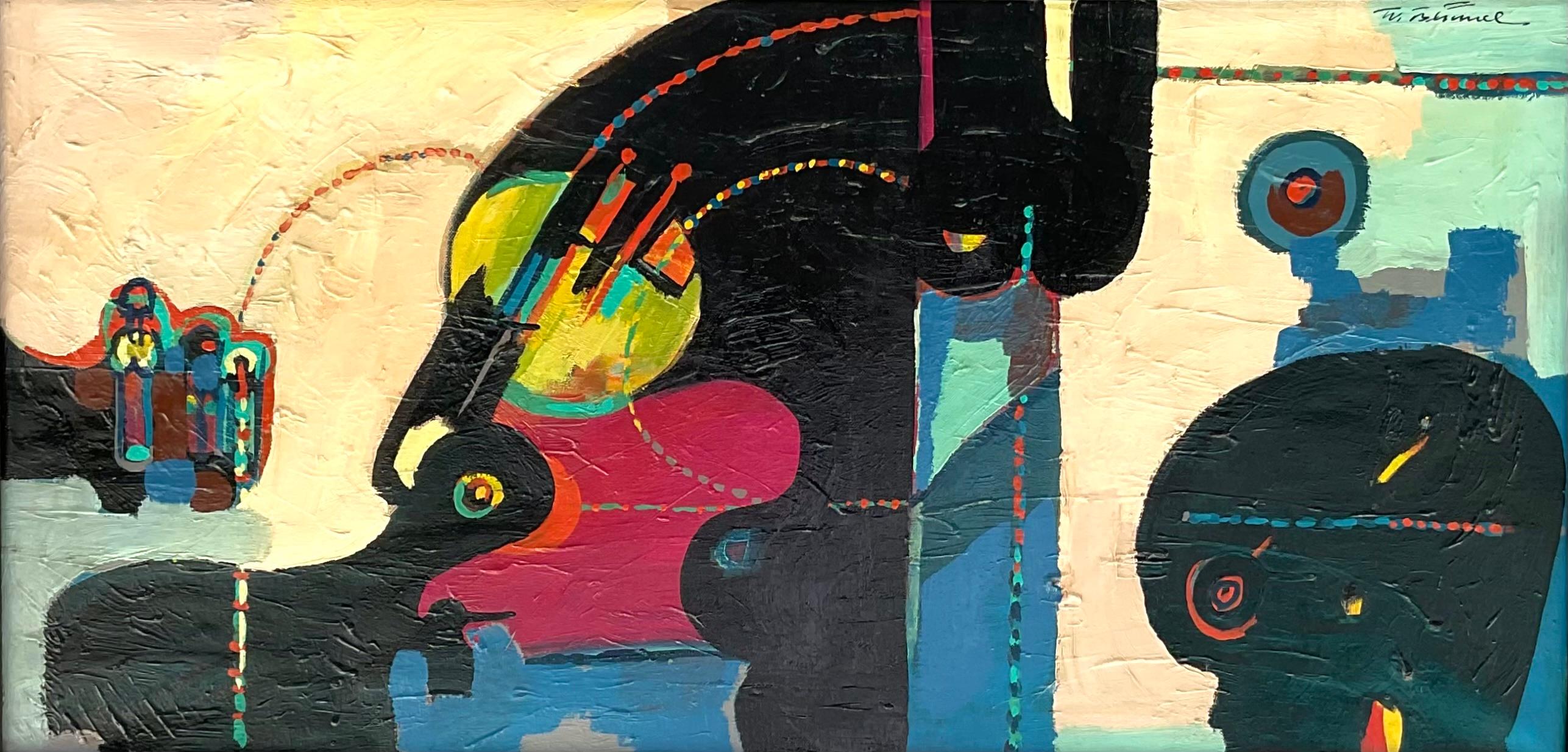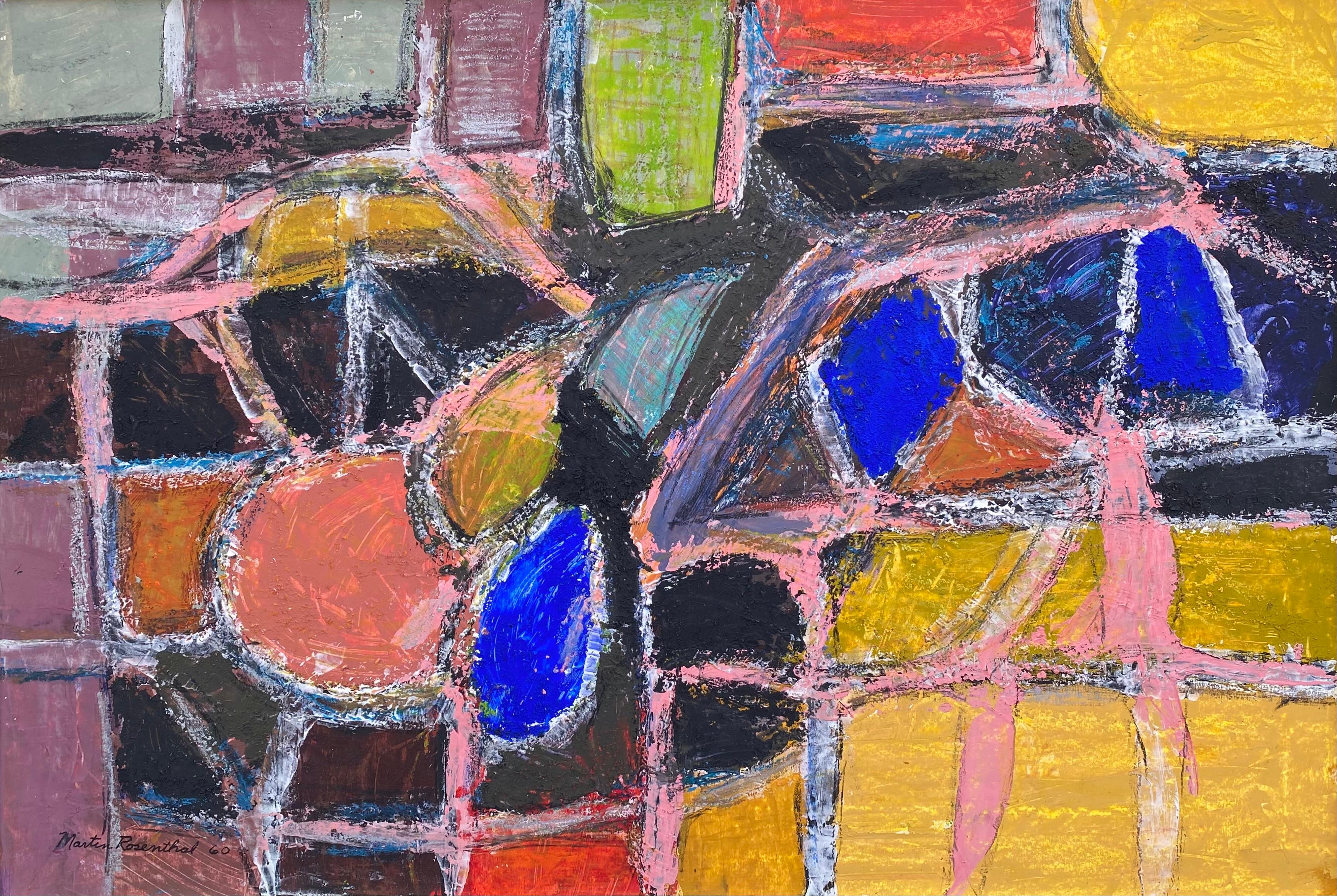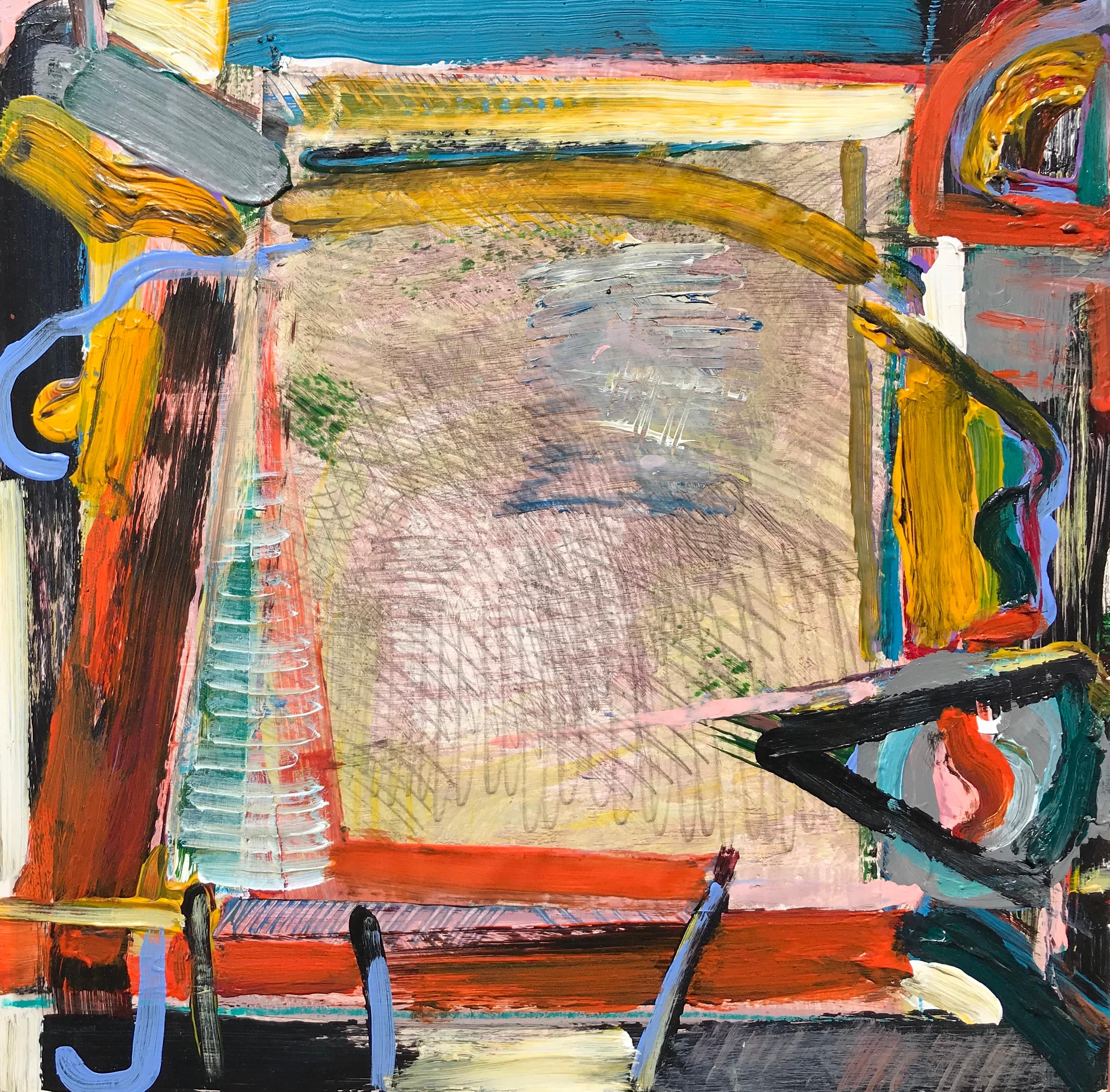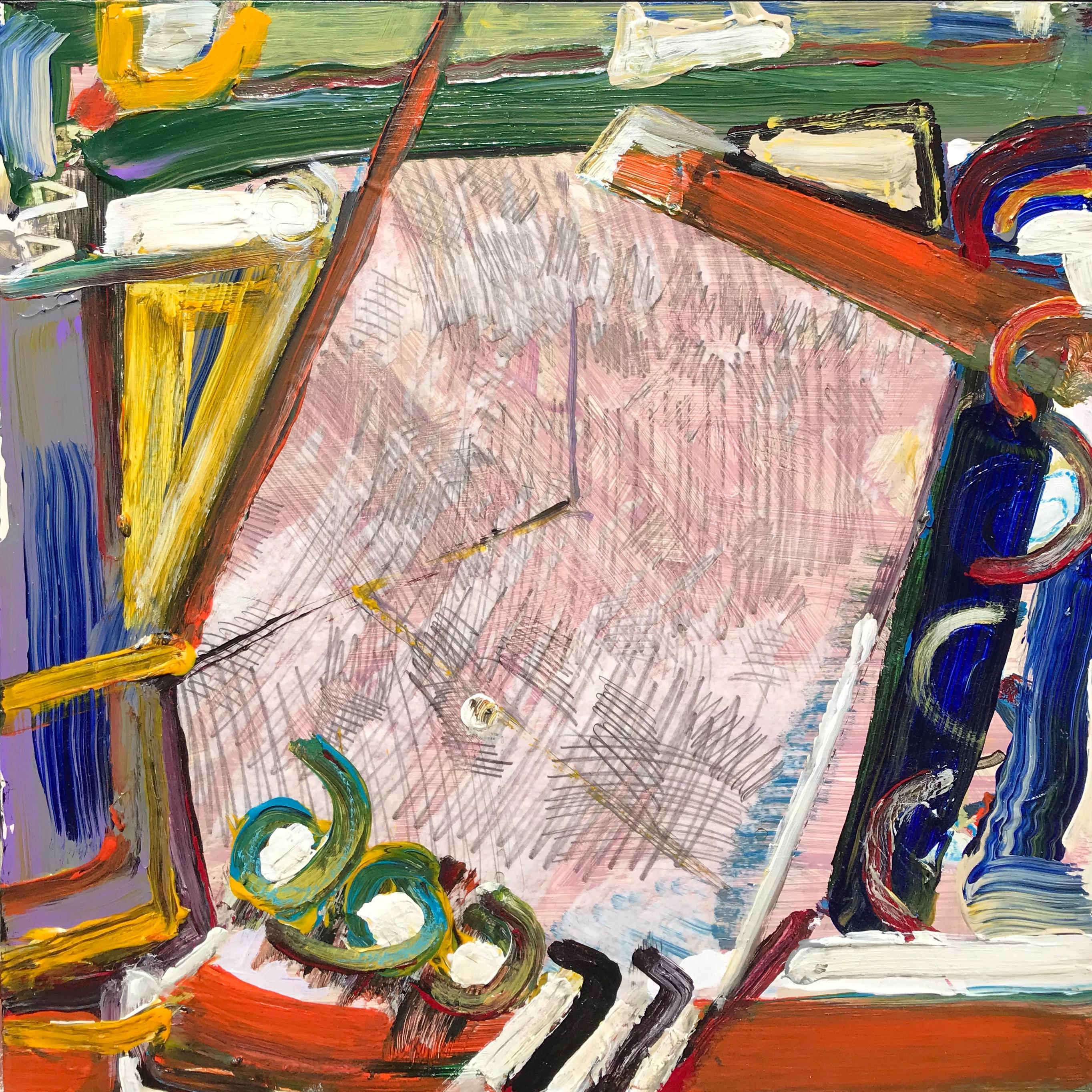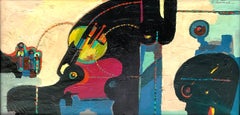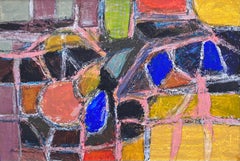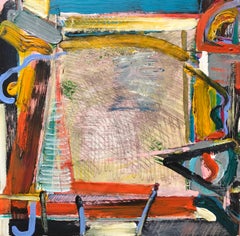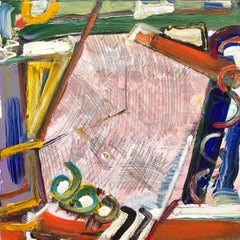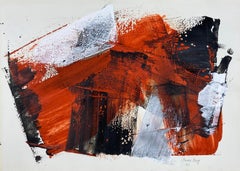Want more images or videos?
Request additional images or videos from the seller
1 of 9
Nahum Tschacbasov“Untitled Abstract”1945
1945
$5,400
£4,194.88
€4,759.73
CA$7,720.98
A$8,446.94
CHF 4,411.68
MX$100,943.03
NOK 55,426.71
SEK 52,165.28
DKK 35,544.94
About the Item
Original mid-century modern abstract oil on canvas painting by the well known Russian/American artist Nahum Tschacbasov. Signed lower right and dated 1945. Condition is very good. Presently unframed. Provenance: Estate of the artist Nahum Tschacbasov.
Nahum Tschacbasov
Biography :
Russian-American artist Nahum Tschacbasov (1899-1984) is known for his cubo-surrealistic works which feature a strong psychological element. Some of his work bears a resemblance to work of another Russian-American artist--David Burliuk. He was somewhat of a late starter, moving to Paris in 1932 to study under Adolph Gottlieb, Marcel Gromaire and Fernand Leger. He had his first exhibition in Paris in 1934. He then returned to the US where he joined Rothko and Gottlieb at the Galery Seccession. He was one of the co-founders of The Ten, a group of social conscious abstract painters which included Rothko, Gottlieb, Joseph Solman and Ilya Bolotowsky, among others.
In 1944, he began to work at Stanley Hayter's Atelier 17, a center for surrealistic ideas. Between 1936 and 1943, he had five one-man exhibitions at the ACA Galleries and participated in five group shows. He also exhibited at the Whitney, the Pennsylvania Academy of Fine Arts, the Knox Albright Museum, the Chicago Institute of Fine Art and Corcoran, among others. His work can be found in the permanent collections of the Met, the Whitney, the Brooklyn Museum and the Jewish Museum.
Tschacbasov has been the subject of two recent retrospective at Fletcher Gallery, Woodstock, NY and Arthur Kalaher Fine Art, Southampton, NY. He was the subject of a retrospective at the National Arts Club entitled: "Nahum Tschacbasov: A Retrospective” in 2013.
- Creator:Nahum Tschacbasov (1899-1984, American)
- Creation Year:1945
- Dimensions:Height: 30 in (76.2 cm)Width: 24 in (60.96 cm)Depth: 1 in (2.54 cm)
- Medium:
- Movement & Style:
- Period:
- Condition:
- Gallery Location:Southampton, NY
- Reference Number:1stDibs: LU1419032372
About the Seller
5.0
Platinum Seller
Premium sellers with a 4.7+ rating and 24-hour response times
Established in 1977
1stDibs seller since 2013
550 sales on 1stDibs
Typical response time: <1 hour
- ShippingRetrieving quote...Shipping from: Southampton, NY
- Return Policy
More From This Seller
View All“Untitled Abstract”
Located in Southampton, NY
Original oil on canvas abstract painting by the Czech/German artist, Walter Blumel. Signed upper right by the artist and verso as well. Condition is very good. Circa 1965. Overall ...
Category
1960s Abstract Expressionist Abstract Paintings
Materials
Canvas, Oil
“Untitled Abstract”
By Martin Rosenthal
Located in Southampton, NY
Original abstract oil painting on heavy card stock by the American artist Martin Rosenthal. Signed lower left and dated 1960. Condition is very good. Slight bow to board. Nicely pro...
Category
1960s Abstract Expressionist Abstract Paintings
Materials
Oil, Board
$2,080 Sale Price
20% Off
“Untitled”
By Iliyan Ivanov
Located in Southampton, NY
Original acrylic on fiberboard painting by the Bulgarian/American artist, Iliyan Ivanov. Signed, and dated verso, 2012. Untitled. This painting is part of the “Memories of Unfinis...
Category
2010s Abstract Expressionist Abstract Paintings
Materials
Acrylic, Fiberboard
$1,480 Sale Price
20% Off
“Untitled”
By Iliyan Ivanov
Located in Southampton, NY
Original acrylic on fiberboard painting by the Bulgarian/American artist, Iliyan Ivanov. Signed, and dated verso, 2012. Untitled. This painting is part of the “Memories of Unfinis...
Category
2010s Abstract Expressionist Abstract Paintings
Materials
Acrylic, Fiberboard
$1,480 Sale Price
20% Off
“Abstract #6”
By Martin Rosenthal
Located in Southampton, NY
Original oil paint on heavy archival paper abstract by the American artist, Martin Rosenthal. Bold, vibrant colors. Signed lower right by the artist and dated 1965. Condition is ver...
Category
1960s Modern Abstract Paintings
Materials
Oil, Archival Paper
“Abstract #8”
By Martin Rosenthal
Located in Southampton, NY
Original oil paint on heavy archival textured paper abstract by the American artist, Martin Rosenthal. Bold, vibrant colors. Signed lower left by the artist and dated 1964. Conditio...
Category
1960s Modern Abstract Paintings
Materials
Oil, Archival Paper
You May Also Like
Untitled oil on canvas painting Abstract Expressionism
By Deyan Valkov
Located in Sitges, Barcelona
Title: Untitled
Artist: Deyan Valkov
Medium: Oil on canvas
Dimensions: 24 x 20 inches
Year: 2002 (signed on the artwork)
Frame: Unframed
Style: Abstract Expressionism
Description of...
Category
Early 2000s Abstract Expressionist Abstract Paintings
Materials
Canvas, Oil
$1,063 Sale Price
55% Off
Mid-Century Modern Abstract Expressionist Oil Painting
By Toma Yovanovich
Located in Buffalo, NY
An original mid century modern abstract expressionist painting by American artist Toma Yovanovich.
Toma Yovanovich (1931-2016)
Yovanovich was a painter/printmaker whose w...
Category
1960s Abstract Expressionist Abstract Paintings
Materials
Oil
Abstract Composition
Located in Los Angeles, CA
An abstract expressionist oil on heavy paper by Aaron Levy.
The work is signed and dated 1963 in pencil on the lower right.
Newly matted and framed and ready to hang.
The overall siz...
Category
1960s Abstract Expressionist Abstract Paintings
Materials
Oil
Untitled
By Toma Yovanovich
Located in Buffalo, NY
An original mid century modern abstract expressionist painting by American artist Toma Yovanovich.
Toma Yovanovich (1931-2016) was a painter/printmaker whose work is in collect...
Category
1960s Abstract Expressionist Abstract Paintings
Materials
Canvas, Oil
French Expressionist Abstract 20th Century Oil Painting Blaze of Colors
Located in Cirencester, Gloucestershire
Abstract Expressionist composition
by Andre Guillou (French 1925-2017)
oil on board stuck on board, mounted
mount: 25.5 x 19.75 inches
board: 19 x 13 inches
provenance: the artists ...
Category
Mid-20th Century Abstract Expressionist Abstract Paintings
Materials
Oil
Untitled Abstract Painting on Canvas by Fern Samuels
By Fern Samuels
Located in West Palm Beach, FL
Fern Samuels received her Bachelor of Fine Arts degree from Loyola University in Chicago, Illinois, and her Master of Fine Arts from the School of the Art institute of Chicago. She r...
Category
21st Century and Contemporary Abstract Expressionist Abstract Paintings
Materials
Acrylic
More Ways To Browse
1985 Art Print
Black And White Photography Wild Horses
Diptych Photography
Lithographs Pablo Picasso 1969
Felicien Rops
Gleizes Albert
Hotel Du Cap Antibes France
Hotel Du Cap Eden Roc
New York Lithographs
Soviet Art
Black And White Photograph Of Marilyn Monroe
Mark Shaw Kennedy
New Objectivity
Black And White Photography Dog
Military Prints
Naomi Campbell
Vintage Camera Lenses
Louise Bourgeois
